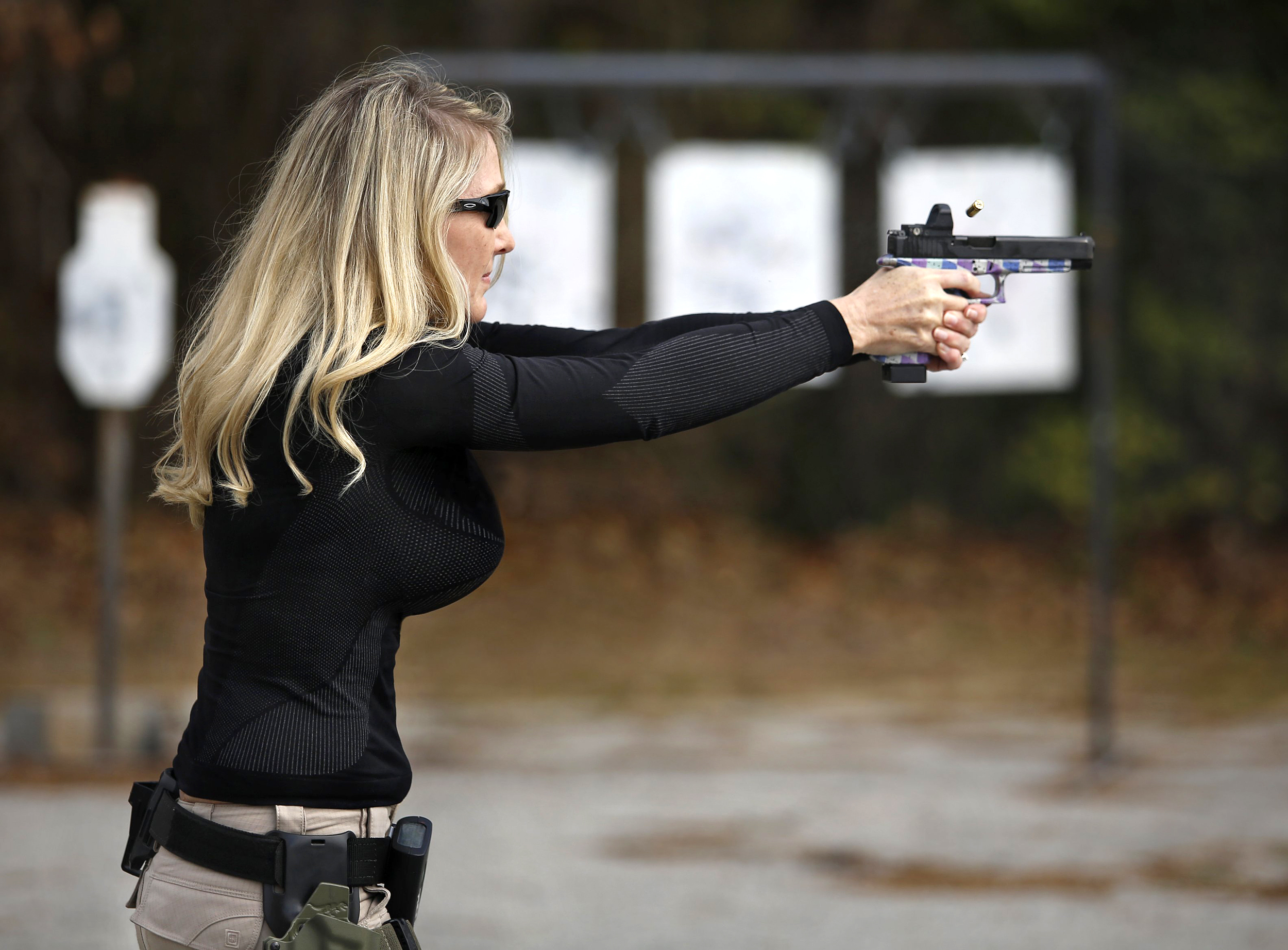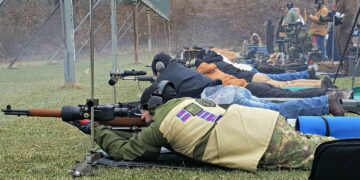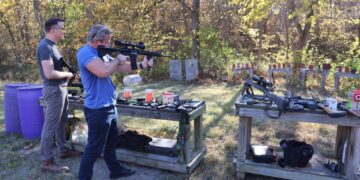By Gretchen A. Fritz
Never one to shy away from hot topics and the culture war, the editor of the Illinois Shooter suggested that I write about training men versus training women. I guess if you’re going to have a page called “The Lady Shooter,” you may as well go there.
The primary audience for this article is probably not reading the Illinois Shooter, so, gentle reader, please pass this on to the woman who needs to see it.
Nearly all of my firearms training has been on-the-job training, as has my firearms instructor training. So what I am about to tell you is based on personal experience and was later explained to me by a book called Why Gender Matters by Leonard Sax, M.D., Ph.D. This book more than anything else has informed my teaching.
Sax begins by elucidating current science on physical differences between males and females then explains how physiology effects psychology. “Differences between girls and boys are natural. Those differences should be acknowledged, accepted, and exploited for educational purposes.” I agree wholeheartedly.
Women in firearms classes are much more honest with themselves and with their instructors about what they don’t know. As a result women are more primed for learning. A woman’s attitude is basically, “Teach me.”
Men on the other hand act like shooting is a birthright. Men are built for action. A man’s attitude is more like, “Just let me do it. I don’t need instruction.” I have also found some men to be resistant to or incapable of taking correction. Lest you think me anti-male, I checked with another local instructor; he agreed with me and chuckled.
Sax says, “…there’s another basic reason why boys are more likely to engage in physically risky activities. Boys systematically overestimate their own ability, while girls are more likely to underestimate their abilities.”
Feelings of Inadequacy
I have seen this to be overwhelmingly true with female students. It is one major reason women will seek out a female firearms instructor and/or an all-female class. Women want to feel free to ask all their questions and have the instructor go as slow as they need her to and break ideas down for them without feeling like they are slowing down the rest of the class. I often mitigated this desire on the shooting range by letting all the men take the concealed carry test first—yes, please, guys, show us how it’s done—and then testing the women second, separately. Generally women are quite happy to get to know one another and watch the men shoot and possibly struggle while waiting their turn. I don’t know if anyone specifically said so, but certainly if the men had to deal with firearms jamming or misfiring, the women would understand that any problems they experienced were not unique to them or due to any lack of knowledge that they brought to the class.
The primary thing that I want women to know is you can do this! A local gun expert I know once said, “How did you get here today? Driving a car is more complicated than shooting a gun.” Furthermore you can probably do it better than your man can because women are hard-wired to be better with fine motor skills; think sewing, cake decorating, using a kitchen knife, writing cursive.
In concealed carry classes, many of the women there were semi-unwilling or trepidatious participants who had been dragged there by their significant others. We can work with a low level of hesitation; full-on fear, however, will make training difficult. I personally have only encountered one such person, but she was motivated to conquer her fear. She is still on that journey unfortunately. I affirm and mitigate students’ fears by acknowledging that guns can be dangerous but are no more dangerous than kitchen knives or power tools; they are all tools that are dangerous but are made for a specific purpose and thus require training in their safe usage. Being deliberate about teaching and reiterating the gun safety rules also seems to help students who are struggling with fear of firearms.
When I teach women, I make certain to show them I believe them to be my equal. Just because I shoot guns, I’m no smarter or cleverer or braver than you are. Sax writes about “a useful tip that several teachers have shared with me. If you’re working with a girl, smile and look her in the eye when you’re helping her with a subject. That gives her nonverbal reassurance that you like her and you’re her friend…. Teachers report more success with girls when they use a supportive, nonconfrontational approach.”
Sax goes on to say that females give more weight to their teacher’s opinions and “will naturally seek to affiliate with the teacher…. Most girls won’t hesitate to ask the teacher for help when they need it…. Girls are more likely to assume that the teacher is an ally and a friend…. And girls are much more likely than boys are to ask a teacher for advice about personal matters, totally unrelated to the academic material.” That time on the range with the women segregated was invaluable and changed the tone for the entire rest of the class because women want to have rapport with their teachers and with each other.
I Jump, You Jump, We All Jump
Some women are afraid of the guns themselves, but others just don’t like the noise of gunfire. There are two biological reasons for this. The first is women’s hearing. Sax’s study of gender differences was launched when he was exposed, during medical school, to “a series of studies done by Professor John Corso at Penn State during the 1950s and 1960s, demonstrating that females hear better than males.” Those findings have been confirmed by many other studies since that time. Women’s more sensitive hearing makes shooting outdoors more pleasant than shooting indoors, weather notwithstanding. When I shoot indoors, I like to double up on hearing protection by putting in foam earplugs before putting on my “earmuffs.”
The second reason is known as auditory startle reaction, a reflexive reaction to unexpected loud noises. Because Sax’s book was primarily written to benefit parents and K-12 teachers, it does not address this; but it is particularly relevant to shooting sports and training. Twenty-first century research has found women to have a stronger auditory startle reaction than men have. After you read that women have better hearing, this makes perfect sense. It also makes sense from a self-defense perspective: women have more to fear in the world at large, from the expulsion from the Garden of Eden to the present time. We need to have great hearing so we will know when someone or something is planning to attack us. Forewarned is forearmed.
The best way to mitigate both of these problems is to start beginning female shooters on .22 caliber guns, which SAFER USA does without exception. A full-size .22 has low recoil and is barely louder than a BB gun, so it helps the novice shooter get used to all the other aspects of shooting (stance, grip, sight alignment, sight picture, breathing, trigger pull, and follow through) without having to deal with a lot of noise and recoil. Once you learn the fundamentals, you can learn the specifics of different guns much more easily.
Gender does play a role in firearms training as well as general education and needs to be acknowledged more by instructors and teachers. Men can do very well as instructors for women, but they absolutely must recognize that their approach cannot be the same as it is for men. Ladies, if you don’t feel good about your firearms instructor, just assume it’s not you; it’s them. And feel liberated to find someone who connects with you. She or he is out there.
Reprinted from The Illinois Shooter









